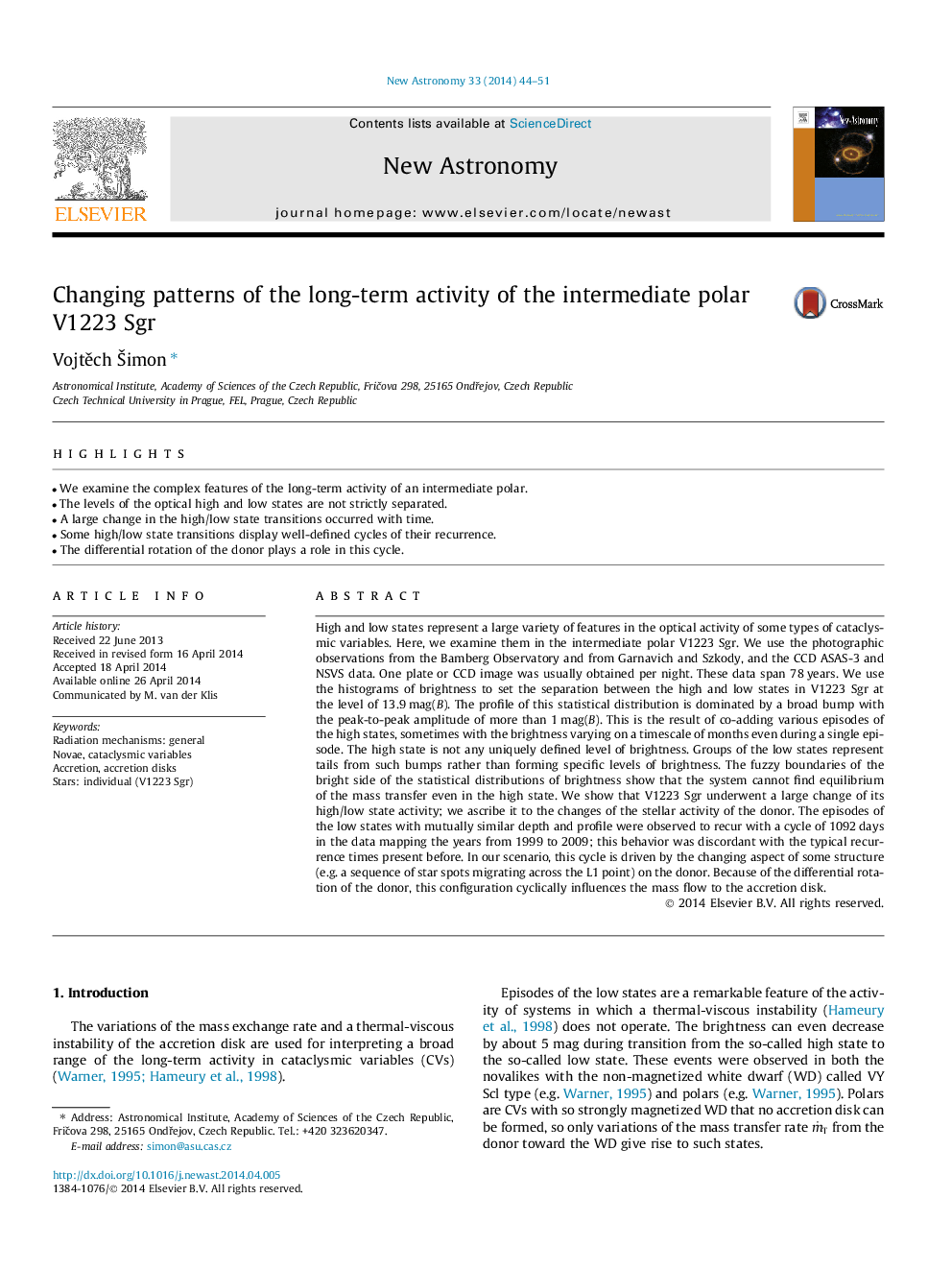| Article ID | Journal | Published Year | Pages | File Type |
|---|---|---|---|---|
| 1778868 | New Astronomy | 2014 | 8 Pages |
•We examine the complex features of the long-term activity of an intermediate polar.•The levels of the optical high and low states are not strictly separated.•A large change in the high/low state transitions occurred with time.•Some high/low state transitions display well-defined cycles of their recurrence.•The differential rotation of the donor plays a role in this cycle.
High and low states represent a large variety of features in the optical activity of some types of cataclysmic variables. Here, we examine them in the intermediate polar V1223 Sgr. We use the photographic observations from the Bamberg Observatory and from Garnavich and Szkody, and the CCD ASAS-3 and NSVS data. One plate or CCD image was usually obtained per night. These data span 78 years. We use the histograms of brightness to set the separation between the high and low states in V1223 Sgr at the level of 13.9 mag(B). The profile of this statistical distribution is dominated by a broad bump with the peak-to-peak amplitude of more than 1 mag(B). This is the result of co-adding various episodes of the high states, sometimes with the brightness varying on a timescale of months even during a single episode. The high state is not any uniquely defined level of brightness. Groups of the low states represent tails from such bumps rather than forming specific levels of brightness. The fuzzy boundaries of the bright side of the statistical distributions of brightness show that the system cannot find equilibrium of the mass transfer even in the high state. We show that V1223 Sgr underwent a large change of its high/low state activity; we ascribe it to the changes of the stellar activity of the donor. The episodes of the low states with mutually similar depth and profile were observed to recur with a cycle of 1092 days in the data mapping the years from 1999 to 2009; this behavior was discordant with the typical recurrence times present before. In our scenario, this cycle is driven by the changing aspect of some structure (e.g. a sequence of star spots migrating across the L1 point) on the donor. Because of the differential rotation of the donor, this configuration cyclically influences the mass flow to the accretion disk.
